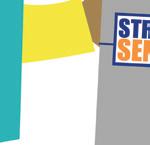













































































VENDORS
Abel Putu, Aida Peery, Al Edmonson, Akindele
Akerejah, Amia Walker, Amina Washington, Andre Brinson, Andrew Anderson, Angie Whitehurst, Anthony
Carney, Antoinette Calloway, Archie Thomas, Beverly Sutton, Brianna Butler, Burton Wells, Carlos Carolina, Carol Motley, Charles Armstrong, Charles Woods, Chon Gotti, Chris Cole, Conrad Cheek, Corey Sanders, Daniel Ball,








veryone at Street Sense Media works together to support and uplift our vendor community.




Darlesha Joyner, David Snyder, Debora Brantley, Degnon (Gigi) Dovonou, Denise Hall, Dominique
Anthony, Don Gardner, Donté Turner, Doris Robinson, Earl Parker, Dwayne Butler, Eric Glover, Eric ThompsonBey, Erica Downing, Evelyn
Nnam, Floyd Carter, Franklin Sterling, Frederic John, Freedom, Gerald Anderson, Greta Christian, Harriet






Fields, Henrieese Roberts, Henry Johnson, Ivory Wilson, Jacqueline “Jackie” Turner,

Jacquelyn Portee, James Davis, James Hughes, Jeanette Richardson, Jeff Taylor, Jeffery McNeil, Jeffrey Carter, Jemel Fleming, Jennifer McLaughlin, Jermale McKnight, Jet Flegette, Jewel Lewis, John Alley, John Littlejohn, Josie Brown, Juliene Kengnie, Kenneth Middleton, Khadijah Chapman, Kym Parker, Laticia Brock, Laura Smith, Lawrence Autry, Levester
Green, Lu Potter, L. Morrow, Mango Redbook, Marc
Grier, Marcus McCall, Mars, Martin Walker, Mary Sellman, Maurice Spears, Melody Byrd, Michael Warner, Michele Rochon, Morgan Jones, Nikila Smith, Patricia Donaldson, Patty Smith, Phillip Black, Queenie Featherstone, Rachelle Ellison, Rashawn Bowser, Reginald Black, Reginald










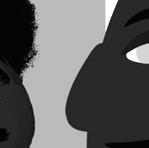

C. Denny, Ricardo Meriedy, Richard “Mooney” Hart, Rita Sauls, Robert Warren, Rochelle Walker, Ron Dudley, Sasha Williams,
Shuhratjon Ahmadjonov, Sybil Taylor, Tonya Williams
Vennie Hill, Warren Stevens, Wendell Williams, William Mack

BOARD OF DIRECTORS
Mary Coller Albert, Blake
Androff, Nana-Sentuo


Bonsu, Jonquilyn Hill, Stanley Keeve, Clare

Krupin, Ashley McMaster, Matt Perra, Michael Phillips, Daniel Webber, Shari



Wilson, Corrine Yu
CHIEF EXECUTIVE OFFICER



Brian Carome
DIRECTOR OF DEVELOPMENT AND COMMUNICATIONS







































































































































































































































































































Doris Warrell
DIRECTOR OF PROGRAMS
















































































Darick Brown
DIRECTOR OF VENDOR









EMPLOYMENT

Thomas Ratliff






MORGAN BASKIN
DCist/WAMU
D.C. Attorney General Brian Schwalb is asking a court to appoint a guardian who would be responsible for managing Marbury Plaza, a dilapidated 674-unit apartment complex on Good Hope Road SE that’s home to more than 2,500 people.
The extraordinary step of seeking a receiver for the building — only eight housing conditions cases since 2016 have resulted in receivership — comes just over two years after former Attorney General Karl Racine first sued the property owner for failing to address numerous housing code violations.
Tenants at Marbury Plaza allege they have lived without heat, air conditioning and hot water; endured pervasive pest infestations and sewage leaks; and lived with failing plumbing and electrical systems, among other issues. Taken together, the conditions issues “[expose] tenants to serious threats to their health, safety, and security,” the District’s motion alleges.
While the property owner, an entity called MP PPH LLC, initially agreed to a June 30, 2022 deadline for a series of repairs and assessments, tenants told Street Sense last year that conditions continued to deteriorate despite involvement from the attorney general.
At the time, D.C. argued in court that the property owner failed to comply with 16 requirements of the consent order and should be found “in flagrant violation” of it. The consent order required the property owner to “remediate mold, leaks, flooding, failed plumbing and electrical systems, insect and rodent infestations, nonfunctioning elevators and chairlifts, and other serious housing code violations affecting
Henrieese Roberts
Sept. 5
ARTIST/VENDOR
VENDOR PROGRAM ASSOCIATES
Aida Peery, Clifford
Samuels, Chon
Gotti
VENDOR PROGRAM VOLUNTEERS
Beverly Brown, Roberta Haber, Ann Herzog, Madeleine
□ Street Sense Media will be closed Monday, Sept. 4 for Labor Day.
the health, safety, and enjoyment of the residents of the complex,” the District wrote in a filing. (MP PPH LLC argued in a court filing that it substantially addressed most items outlined in the consent order, but that some were too cost prohibitive to resolve. Attorneys for the defendants did not immediately respond to a request for comment.)

Schwalb is now asking a judge to appoint a third party receiver to oversee the repairs and assessments that should have been made last year.
“Defendants’ failure to abate these conditions demonstrate a pattern of neglect for over a period of 30 consecutive days, which poses a serious threat to the health, safety, and security of the tenants,” the filing reads. “Because Defendants are incapable of prioritizing tenant safety, the District requests this Court appoint a receiver who has the skills and expertise to develop and supervise an abatement plan for the rehabilitation of Marbury Plaza.”
Among the most pressing issues D.C. is encouraging the court to consider are ongoing pipe leaks that are “endemic” to the building, Schwalb’s office said in its filing. It cited a July 2023 assessment conducted by a third party plumbing company that identified hundreds of active leaks in tenants’ apartments. One tenant alleges she encountered three separate flooding incidents in her apartment over the course of five weeks this summer.
Schwalb’s office also cited ongoing mold contamination issues, arguing that the property owner has only reviewed 285 of the complex’s 674 units for mold to date. One tenant with
Gerald Anderson


Sept. 7
ARTIST/VENDOR
asthma and inflammatory pulmonary disease was hospitalized this month for breathing issues, the District wrote in its most recent filing. (In a July filing, MP PPH claimed that it inspected all but eight units for mold contamination.)
The District also alleges that tenants were left without warm water and air conditioning in recent months, “exposing them to extremely unsanitary conditions in the peak of summer,” it said.
As a result of these ongoing conditions issues, a judge ordered the property owner in April to provide roughly $5 million in retroactive rent reductions to tenants in the building, an abatement that will remain in effect until the property owner repairs the complex. The rent reduction will increase to 75% if the court finds MP PPH out of compliance with the order by Oct. 23.
While receivership is among the strongest steps the D.C. government can take to compel repairs at a building, the process is time consuming and lengthy, often taking several years to resolve.
A 2016 lawsuit Racine filed against notorious landlord Sanford Capital concluded just last year, a tumultuous and high-profile dispute that ultimately saw the company driven from D.C., and forced to offload seven of its apartment buildings.
Angie Whitehurst
Sept. 8
ARTIST/VENDOR
Tonya Williams

Sept. 9
ARTIST/VENDOR
□ Find a list of farmers markets, the hours when case management is open and other info useful to vendors at streetsensemedia.org/ vendor-info.
□ Let’s work on those paper sales together! Come see Thomas to learn how to accept Venmo and CashApp payments and how to use Twitter to let customers know where you’re selling.
□ Receive extra newspapers for referring someone you know to New Vendor Orientation. Every Tuesday and Thursday at 2 p.m.
Read this democratically elected code of conduct, by vendors, for vendors!
1. I will support Street Sense Media’s mission statement and in so doing will work to support the Street Sense Media community and uphold its values of honesty, respect, support, and opportunity.
2. I will treat all others, including customers, staff, volunteers, and fellow vendors, respectfully at all times. I will refrain from threatening others, pressuring customers into making donations, or engaging in behavior that condones racism, sexism, classism, or other prejudices.
3. I understand that I am not an employee of Street Sense Media but an independent contractor.
4. While distributing the Street Sense newspaper, I will not ask for more than $2 per issue or solicit donations by any other means.
5. I will only purchase the newspaper from Street Sense Media staff and volunteers and will not distribute newspapers to other vendors.
McCollough, Dylan Onderdonksnow, Amelia Stemple, Tyler Bruno
MANAGER OF ARTISTIC WORKSHOPS
Maria Lares
EDITOR-IN-CHIEF
Will Schick
STAFF REPORTER
Annemarie Cuccia
EDITORIAL INTERNS
Cole Kindiger
Jessica Rich, Casey Bacot, Gabriela
Ferreira Reitz
ARTISTS-INRESIDENCE
Ariane Mohseni
(Film), Bonnie Naradzay (Poetry), David Serota (Illustration), Lalita Clozel (Film), Willie Schatz (Writing), Leslie Jacobson (Theater), Roy Barber (Theater), Rachel Dungan (Podcast)




ARTS EDITOR
(VOLUNTEER)
Austine Model
OPINION EDITOR (VOLUNTEER)
Candace Montague
EDITORIAL
VOLUNTEERS
Josh Axelrod, Ryan Bacic, Lilah Burke, Chelsea Ciruzzo, Lenika
Cruz, Alison Henry, Kathryn Owens, Andrew Siddons, Bill Meincke
6. “I will not distribute copies of “Street Sense” on metro trains and buses or on private property.”
7. I will abide by the Street Sense Media Vendor Territory Policy at all times and will resolve any related disputes with other vendors in a professional manner.

8. I will not sell additional goods or products while distributing “Street Sense.”

9. I will not distribute “Street Sense” under the influence of drugs or alcohol.
10. I understand that my badge and vest are property of Street Sense Media and will not deface them. I will present my badge when purchasing “Street Sense” and will always display my badge when distributing “Street Sense.”
In March, Ward 3 Councilmember Matt Frumin introduced the Rent Stabilization Protection Amendment Act of 2023. The bill, if passed, would make housing vouchers subject to D.C.’s rent stabilization law.
Rent stabilization laws limit the rent increases landlords can implement each year in apartment units built after 1976. But the regulations do not apply to landlords leasing to low-income tenants who rely on housing vouchers. As Street Sense has previously reported, this policy can incentivize some landlords to drive out existing tenants in rent-stabilized units in favor of people with vouchers to turn a profit.
Frumin, supported by some tenant organizations and the Office of the Tenant Advocate, argues this practice is unfair as it circumvents the intended purpose of both programs — to create affordable housing.
However, many housing providers testified against the bill at a June 29 hearing. Alex Rosello, director of policy communications at the Apartment and Office Building Association of Metropolitan Washington (AOBA), said the members of his organization worry the bill will make it more difficult for voucher holders to find a place to rent. Rosello contends that landlords incur more costs by renting to people who use housing vouchers. Because of the government’s involvement in the leasing process, landlords must endure longer wait times and navigate bureaucracy to rent to prospective tenants.
While there are some examples of “unscrupulous actors,” many landlords do not see vouchers as a way to profit, Rosello argued. He pointed to the fact the D.C. Housing Authority (DCHA) has already begun to reform how it sets voucher rents, and suggested D.C. wait to see what effect that has before passing further regulations.

The following conversation has been edited for length and clarity.
Vouchers are a part of a very important program intended to provide housing for folks who’ve been formerly homeless. A key theory behind the program is to avoid concentrations of poverty, giving people a chance to have stable housing and get back on their feet. For the most part, the program is very successful.
But, we have one phenomenon where landlords in buildings that are subject to rent control believe they can circumvent the limitations of rent control by having voucher tenants whose rents are not subject to the rent stabilization limits. That provides an incentive to create new concentrations of poverty.
What
We don't want to cannibalize all of our rent stabilized housing stock through the voucher program, because that would be taking one form of affordable housing and displacing another. The structure needs to be adjusted so there isn't so much of an incentive for landlords to go with a voucher tenant as opposed to a rent stabilized tenant. It's not that they shouldn't go with a voucher tenant, but we shouldn't incentivize the displacement of rent stabilized units. So the goal here is to make this program work for everybody, for the tenants who are there on vouchers and for other folks. And, ultimately, the goal is not just to have voucher tenants in rent stabilized buildings, but to make sure that we have voucher tenants in market buildings as well, so that we serve people fully but avoid concentrations of poverty.
On June 29, the council’s housing committee held a hearing about your bill. Broadly speaking, what was said at that hearing and what is the debate that’s going on?
When we first came out with the bill, we talked with advocates in the homeless services world and apartment owners and we had broad support from both groups. As we saw in the testimonies at the hearing, though, there's a category of landlords who testified against the bill and are very concerned about its impact on the economics of projects they’re working on. We’re going to have those folks in to talk about the issues they raised and explore it more than you can at a hearing, where everybody only gets three minutes to speak. That said, I think the hearing was very effective in bringing out the set of landlords who are most concerned. Some of them may be in the middle of a project based on the assumption that they would be able to get rents that were higher than the rent stabilized rent, so they’re worried about that. Another thing that was raised was that there may be small multi-unit buildings where the rent stabilized cost is much lower than the market rent cost. Some people worry about what the impact on those units would be.
The structure of what DCHA proposed is that they will come up with reasonable rents by comparing costs in an area. But what’s a reasonable rent? Especially since the DCHA rubric doesn’t distinguish between rent stabilized and market costs. And so I'm not sure that that system is going to result in significantly lower rents under the rent reasonableness standard. And that’s a problem.
What my bill does is establish the distinction between rent stabilized and market and not to create one building that's 100% or 60% voucher holders, but to have 10 buildings where there are some number of voucher residents.
Can you elaborate on the importance of not concentrating on voucher holders?
I think we all benefit from having diversity on social and economic metrics. It makes for a better world. It makes for greater understanding. And it creates more opportunity for people who have not enjoyed the privileges that I have. We
can only create those opportunities by getting people under the same roof. We might be under the same roof and fight with each other, but we need to be under the same roof and communicate with each other in order to see each other in a healthier, helpful way. If you have one building that's 100% low income people, you're not getting that benefit, and you have a situation where that's the building that other people in the neighborhood stay away from. And getting to know each other in constructive ways, it's not easy and it's not going to happen fast, but it's sort of the only way to get to a different understanding of each other.
Why did you pose this bill? What is it about the work that you do that led you to fight for this issue?
The way in which the voucher program has operated in Ward 3 has created a fair amount of friction — I hear about it all the time. The majority of folks understand the importance of it and want to be supportive, but they see issues with it. One set of issues is this cannibalization of rent stabilization.
I also think I have been very active on affordable housing issues in Ward 3 for years. I believe that I have standing with folks who are deeply committed to serving the homeless community because of things that I've done for a decade and a half. And so I do think that I may have the capacity to bring people together around what I think of as sensible solutions. This is an enormously challenging space, but it's one that I feel committed to trying to tackle and do right. When you do things right, people accept it and it sets you up to do more. We need to get to that point with the voucher program.
Looking forward, what's the timeline for this bill and how optimistic are you about its passage?
The next step is a thing called markup, where we take on board whatever we heard in the hearing, make changes to the bill and then have it go through the committee where it’s voted on. So, right now I'm in the process of gathering information, thinking about what we learned from the hearing and what changes were suggested.
I'm hopeful that we'll do that and then in the fall it will pass. Annemarie Cuccia contributed to this article.
“You're from Zimbabwe, right?” said an artist and street paper seller. She smiled broadly as she greeted me.
In July, I arrived in D.C., the famous capital of the United States of America, known for its historical museums that celebrate the beauty and splendor of African Americans. After attending a leadership institute in Michigan I came to the city to pursue what’s known as a “professional development experience,” under a program called the Mandela Washington Fellowship. This fellowship is a flagship program of the U.S. government’s Young African Leaders Initiative which brings fellows from all over Africa working in different industries for professional work exchanges in the U.S.
Back home, in Zimbabwe, I run a publication called The Besana Mail, reporting on children’s issues and serving marginalized communities. The Besana Mail and Street Sense both give their target audiences a platform and space to change lives through developmental and solutions journalism.
Within days of arriving to this city, I found myself at Street Sense Media, an organization whose ethos I recognized. The first two days made it clear to me that we share a vision about journalism. It is about more than just news and stories, it's also about building a platform and valuing diversity.

Street Sense holds a practice every Wednesday to help homeless people with their writing. The woman I met was curious about who I was and what I was doing here. In order to start the day's writing class, she assisted her older coworkers in gathering a pen and paper. We made small talk.
The people I’ve met here are narrating their own tales. Seeing their bylines in the newspaper boosts their self-esteem and sense of community, according to Editor-in-Chief Will Schick.
Over the past several weeks, I’ve learned how Street Sense offers people a different way to earn an income. The biweekly newspaper is sold by homeless people connected to the nonprofit. Vendors stand around the corners of the streets selling the paper while wearing orange vests and bibs. For them, vending is a job. It gives them the opportunity to earn a wage rather than rely on charity. Papers are purchased for $0.50 wholesale and sold for $2. They can save money and eat thanks to the income they create. I couldn’t help but think of how their business model might apply to my work at The Besana Mail. What ways can I help empower the communities we represent to share their stories?
The Besana Mail is a completely different organization. It is structured and centered on the needs of the community. We use a “pillars five” approach, which relies more on research and audience engagement. The approach is a combination of the forms of journalism which we have adopted: developmental, investigative, digital, solutions and citizen journalism. Like Street Sense Media, our business model is not for profit. We rely on grants and fundraising to pool for resources.
Operating in Africa means being conscious of traditions and culture. For example,working with children and different tribes carries its own unique challenges. The Besana Mail makes it easier for people to discuss issues affecting children, even the taboo ones. Such discussions are informed by the community feedback through reseach prior to every discussion. People shape the discussions while we provide a platform that amplifies the voice of the marginalized communities.
The marginalized communities The Besana Mail serves are areas with little to no development of significance and over the years residents have not discussed issues pertaining to transparency, accountability and human rights due to a
lack of informed decision making processes. This is for both children and the communities they live in. In this way, The Besana Mail has become home to many concerns affecting most communities in the southwest of Zimbabwe.
In recent times we have reported on illicit financial flows (IFFs) by local coal mining companies, red flagging their corporate social responsibility at the expense of local communities. We are currently reporting on the power of digital literacy in rural communities in a bid to close the digital divide of urban and rural areas.
Walking in the bustling streets of Washington, D.C., a city of affluence and opportunities, reminded me of the vastly different landscape of Zimbabwe. My first impression was that of a striking contrast between two worlds: one defined by prosperity and the other by a myriad of challenges. Here I encounter both white and African American homeless people in dozens of streets in Northwest D.C. The stories of these individuals who once had a home but now find themselves homeless underscore the disparities that exist between these two vastly different environments.
Streets in Harare, Zimbabwe are characterized by two main things: vendors and children on the move (street kids). Vendors go home and children on the move are very few there. Street homelessness is not an issue. Living on the streets is not common across Africa; especially for people over the age of 25 except for a sizable number of people suffering from extreme mental illness (In my country, we call this “Kupenga”).
Walking through the streets of D.C. is fascinating; some sights remind me of my native continent and country. But I
can't help but notice how widespread homelessness appeared here. It is a serious and depressing issue.
Many of the homeless people I’ve encountered since July often have no viable alternatives for safe housing and are forced to face homelessness. In Africa, it is different. There, people have two homes, one in the city and the other in the village. It’s nearly impossible to be homeless there.
The majority of homeless people I’ve met at Street Sense Media are intelligent, innovative and creative. Many of them are professionals, former lecturers, public workers and graduates, but something happened along the way and they now live without homes. It seems the haves and the have-nots in every society on the globe faces similar struggles, whether in the U.S. or in Africa.
My experience working at Street Sense for this past month has strengthened my belief in not only the power of journalism but in the importance of covering issues that impact marginalized communities. Deliberate support for responsible journalism and media outlets serving specific groups in the U.S. is sustaining organizations like Street Sense. I learned that good journalism requires good laws and policies to create spaces where freedom of press is attainable. Collaborative approaches to common challenges globally can sustain journalism across the world and create an informed and empowered audience. This is the reality of changing communities.

In 2007, Dominique Anthony tested positive for HIV. At the time, she didn’t have access to health insurance, a doctor or any official support to navigate her diagnosis.
Despite a common misconception that the HIV epidemic ended in the 1980s, approximately 1.1 million people in the U.S. live with HIV today, according to HIV.gov. HIV also disproportionately impacts the lives of people experiencing homelessness. According to the National Institute of Health, 3.3% of the homeless population in the United States is HIV positive, compared with only 1.8% of the stably-housed population. Furthermore, a lack of housing has been identified as a “structural barrier” in receiving treatment, meaning that the harm HIV has on people experiencing homelessness, like Anthony, is especially severe.
“We need a realistic view of HIV because acting like it was something we left in the eighties is wrong,” Johnny Bailey, the community outreach coordinator at Honoring Individual Power and Strength (HIPS), said. “But also there’s another end of this where people are afraid to use the same toilet as someone who has HIV, and they’re still kind of in the eighties with their fear.”
Like many people, Anthony held some misconceptions about HIV before she was diagnosed. While many people still believe only homosexual men can get HIV, according to the National Library of Medicine, in reality it is transmissible to any person, of any gender and sexuality.
Specifically, HIV is more common among women who are engaging in sex work. “Some people do sex work to survive,” Anthony explained as she talked about her experience. “It’s an everyday way of life.” Anthony was diagnosed with HIV at a time when testing was not common among sex workers, and PrEP—a medication that is highly effective in preventing HIV according to the Centers for Disease Control and Prevention—was not available.
Because of the lack of structural support for people with HIV, particularly those who are homeless, Anthony turned to various local organizations for help. One such organization, called the Women’s Collective, is a community health and human service agency that provides prevention, care for HIV and other STDs, and support services for girls and women. The most enduring though, in Anthony’s journey, has been HIPS, a harm reduction community offering syringe exchanges, mental health support and various other services.
Bailey describes HIPS as a “community organization in the purest sense of the word.” According to Bailey, as of 2021, HIPS had given out 12,000 overdose prevention kits, exchanged 551,468 syringes, met with 8,500 people in their mobile van and at a drop-in center, and held 540 peer support sessions. HIPS’ mission is to provide a service for people and communities impacted by sex work and drug use by providing a space that otherwise doesn’t exist in the DMV area. “There’s no one really like us,” Bailey said. “We’re trying to save lives and help people reduce harm and have a better life.”



For Anthony, HIPS has filled in the gaps. “They helped me by giving me support, giving me a lot of resources and a lot of things that I needed,” she said. Over the years, Anthony has attended meetings, support groups and training. However, recently she’s taken her role a step further. She now advocates for HIV awareness and prevention, giving support and resources to people in situations similar to hers. In the future, Anthony hopes to get a degree in health care administration so she can continue to support communities through her work.


“This work is important because we’re a community, and we have to save our community,” Anthony said. Similar resources in the DMV include the Family and Medical















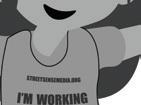















In Arlington’s Memorial Park, a red brick tower stands resolute, reminding passersby that on those grounds nearly a century ago, a community was erased.
“Queen City,” a sculpture by artist Nekisha Durrett, aims to unearth the long-buried history of East Arlington (or, as it was nicknamed by residents, Queen City), the Black neighborhood that was displaced by the construction of the Pentagon.
The simple structure, which stands 35 feet tall in an area filled with high-rises and office buildings, seems lost in time. Its red brick exterior evokes a long-past, industrial era — one similar, maybe, to the era East Arlington residents lived in.
When visitors step inside the sculpture, they’re greeted

by 903 ceramic, teardrop-shaped “vessels” — one for every member of the East Arlington community. Each vessel was handcrafted by one of 17 Black ceramicists recruited by Durrett.
The space is quiet, intimate and — above all — inspiring. According to Durrett, who spoke in an interview with Street Sense, that’s exactly the point.
“I try to leave space for the viewer to experience awe,” Durrett said. “First you see this mundane brick structure that looks like it’s from some bygone period. And then you enter the space and you’re met with something completely unexpected. The viewer then has all of these questions, and then hopefully feels inspired to find the answers and then learn this history that so many people don’t know.”
That history is a tragic one. East Arlington was a victim
of displacement long before the 1940s, according to a 2011 presentation by the Arlington Public Library. Many of its residents previously lived in Freedman’s Village, a postemancipation attempt to house enslaved people, before they were forced out by the government — this time to build the Arlington National Cemetery.
The construction of the Pentagon, at the time the largest office building in the world, initially offered a welcome source of work for Queen City’s working men, according to Dr. Nancy Perry’s 2014 lecture at the Arlington Historical Society.
East Arlington’s residents worked on the construction of the Pentagon for months before they were informed that the project would unseat them from their home, Perry said.
Without the means to move their belongings, many families were forced to leave behind almost everything they owned,
according to the lecture. They fled — first to different temporary housing sites, and then to different parts of the country. Many of them never saw their neighbors again.
It was that side of the tragedy — the human suffering — that the artist said she wanted to evoke. That’s why, in addition to researching the historic community, Durrett arranged a meeting with one of its last living residents. Her conversation with 92-year-old William Vollin, she said, taught her more about Queen City than archives ever could.
“Being able to identify and speak with someone who has been carrying that history since they were 12 years old further humanized the experiences that those people would have gone through,” Durrett said.
“When I was speaking to him, he didn’t recount losing his home or any material possessions. What he did speak about was the loss of his community. About how he never saw most of those people ever again. He speaks about the destruction of Queen City as though it just happened yesterday.”
But the sculpture is about more than a single community, Durrett said. According to data from the housing search site Apartment List, D.C.’s cost of living is 53% higher than the national average — one of the
least affordable cities in the nation.
“Queen City” tells a story of Black displacement at a time when, according to analysis by the Urban Institute, the District’s Black population has been declining for decades. The sculpture, according to Durrett, teaches more than just history.
“The value of learning that history is connecting the dots, it’s seeing how this sort of erasure persists into the present day.”
Just as “Queen City” is meant to teach an erased past, Durrett said, it’s also supposed to bring awareness to the challenges the nation continually faces. But somehow, it still leaves room for celebration.
To create the 903 teardrops that line the interior of “Queen City,” each representing an East Arlington resident, Durrett commissioned 17 Black ceramicists from across the country.

“One thing that I asked them,” said Durrett, “was to bring forward stories of a Queen City in their own community. Each and every one of them had one.”
Although the artists might have been aware of each other’s work, this was their first opportunity to work together, Durrett said. Each ceramicist had varying abilities and experience, especially with the teardrop-
shaped vessels Durrett was requesting.
This led to a “beautiful thing” happening, Durrett said. The ceramicists, rather than working independently on their portion of the commission, collaborated. Artists with more expertise met with less confident ones, creating an atmosphere of compassion and partnership.
In the process of memorializing a community, Durrett said, they had become one themselves.
“Using community, the very thing that was destroyed when East Arlington was razed, to actually create something as grand and long-lasting as ‘Queen City,’ was beautiful,” Durrett said. “It’s not just about the thing, the object — it’s about the process of making it. It’s about showing what we’re all capable of when we work together.”
Often I walk past my public library branch at closing time in northwest D.C. and see a homeless, forlorn-looking person on an outside bench. I wonder what their story is, what will become of them. Are those who are best able to help reaching out to them?
Certainly, I thought of those questions when, as a D.C. Public Library librarian, I parachuted from another branch into the new Northwest One branch, located in the Walker-Jones Education Campus. Back then, I was impelled by self-belief (some might say “arrogance”), insecurity and mission.

At the Northwest One branch, many users were impacted by homelessness, joblessness, and/or mental health problems. I often failed to connect with users while another staffer often succeeded at what I hoped to accomplish.
Soon I left for another branch and then, eventually, was laid off. (A latter Northwest One librarian experiencing difficulty there was Amanda Oliver, as her deeply introspective book “Overdue: Reckoning With the Public Library,” makes clear).
People in libraries experiencing homelessness or mental health problems are not new. A 1980 Washington Post story noted the Psychiatric Institute of Washington conducted classes for the Library of Congress staff on dealing with “disruptive/disturbed” users, many released from institutions such as St. Elizabeth’s. Back then, the emphasis was often on maintaining order, not necessarily helping the people who needed it.
Fortunately, D.C. Public Library (DCPL) and other urban library systems are striving to better serve users experiencing homelessness, and/or suffering from mental illness, substance abuse problems and joblessness.
Jean Badalamenti, DCPL’s manager of health & human services (HHS), believes “the library is the only place with walls and a roof that is low barrier.” Neither an ID or admission ticket is required. “You just walk through the door,” she says. In winter and summer, it’s the one of the only places during the day where many unhoused people can find warmth or cool air.
In 2009, San Francisco’s Public Library was the first to hire a social worker. In 2014, DCPL signed up Ms. Badalamenti, an upbeat, straight-talking social worker. Part of her job then involved helping DCPL staff to better serve people at-risk, including the so-called “disruptive” users.
But an important part of Badalamenti’s job involved forging partnerships to better leverage help for people at-risk, including an early partnership with Pathways to Housing to provide outreach at the main library before it closed for renovations. Now her department partners with D.C.’s Department of Behavioral Health, which provided funds from a federal program to DCPL to hire three, 30-hour a week peer specialists
(aka peer navigators/PNs) as contract workers. Eventually, HHS obtained funding from city council, and this current fiscal year, its staff includes Badalamenti, a full-time clinical social worker and four full-time PNs.
The PNs surmount problems experienced by their clientele, including returning citizens, by knowing which local organizations to reach out to for help. They provide a sounding board for people confronting crises and help them deal with bureaucratic problems such as obtaining needed identification.
One Wednesday at 11 a.m., I visited the Martin Luther King Junior Memorial Library to attend a “Coffee and Conversation” session moderated by Tracy Tobin, an experienced PN, who projects authoritativeness and approachability. She told attendees, many of whom were unhoused that, despite her middle class upbringing, she too suffered from substance abuse, homelessness, living in shelters, substance abuse and other challenges, including a later, serious struggle with Covid.
After the session ended, Tobin, a new addition to HHS, related how she became a PN, originally working with other D.C. government agencies. Not only could she relate to other people’s problems because of her own experiences, using it to build trust, but intensive training equips her with the knowledge and skills to help address their needs or to find the help that can. Tobin is also trained in de-escalation techniques to help defuse tense situations.
And while the library cannot directly provide housing or medical care for people, it can direct them to the organizations and city agencies that often can help. It partners with DBH
to offer DCPL staff voluntary training on how to administer Narcan, which Tobin says is available at all branches. In fiscal year 2022, DCPL, through funding by its foundation, provided 350 care kits with clothing and toiletries to help users in need during winter and summer. Almost 200 Flow Bags (containing feminine hygiene products) for women were provided.
An immediate challenge is the requirement forcing many Medicaid recipients post-Covid to reapply for benefits. Badalamenti notes HHS PNs will work with the library’s new digital navigators to help people to complete complicated online re-enrollment forms.
Perhaps most importantly, Homelessness 101 training is provided to staff twice yearly with partners such as Friendship Place, which Badalamenti credits with improving how library workers treat homeless people.
The book “Overdue” cataloged how larger “systemic problems” in our country impacts at-risk library users. Certainly, neither DCPL nor city government has a magic wand to erase problems like homelessness or mental illness. But DCPL’s efforts to better serve its users in need is an important investment in D.C.’s citizens.
Badalamenti stresses: “I’d like to build up the staff so we can direct as many people to help in as many branches as we can.”
Dear Street Sense Media,
I am proposing an idea for a fundraiser to promote our gifts and talents. My proposal is as follows:
Let’s use use the downstairs space in the Church of the Epiphany to host a talent show.
Let’s sell 10 tickets per person to the show and sell the tickets for $20 apiece.
Let us direct Ms. Maria Lares to become our sponsor and director for this event.
I propose we host this Street Sense Media talent show in October. At the show, we should also sell cakes, pies, cookies and sodas. At the show we should allow people to recite poems for their dead loved ones.
I am not the only one with an idea for fundraising. For example, Mr. Morgan has an idea for us to have a fish fry. But I am only speaking here on behalf of my proposal.
P.S. If you like this idea, please reach out to Ms. Maria or Mr. Thomas.
EVELYN NNAM Artist/Vendor



To the ones who:
• Do it to support their family
• Do it to support themselves
• Are tired yet still work until their time ends
• Work long shifts and overnight hours
• Do it for their children
• Work through the frustrations and problems

• Deal with attitudes and bad tempers




• Do it to put themselves through school
• Do it to help others
• Educate the generation
• Take care of our seniors
• Protect us from danger

• Risk their lives daily
• Listen to our problems
• Love us day after day
• Work well with their hands
• Feed us nutritional meals
• Clean day after day
• Make us laugh
• Make us smile

• Manage our finances
• Run into burning buildings

• Deliver our packages

• Pick up and drop off people at their destinations
• Work hard day after day to make our world work
Thank you for all you do.
Happy Labor Day!
Summer is still here. The weather is very hot all year round. People take their kids to the swimming pool and beaches or stay inside their homes where it is cool.
We had a meeting in late July to discuss Street Sense’s budget problems. Street Sense changed its editorial schedule and went back to publishing every two weeks instead of every week. We hope that everything goes smoothly and that they can give us some more gift cards.
My girlfriend and I are staying safe, eating salads and cold cuts. This month is September. Soon, Street Sense Media will celebrate its 20th anniversary.

Since I started with Street Sense, I learned how to have confidence in myself and talk to people.

I am a people person, so I am glad I can meet people out there. I love to talk!


Since I started with Street Sense, I learned to have confidence. I love talking to people, meeting people and learning how to cope.
Thanks, Street Sense!
Hey friends, I’m back in recovery again. This will be my fourth and final time here, in Jesus’ name. I came back a year and a half ago. I'm processing. I’m doing good at learning new things and am trying to do my best.
My house number and I are very close and have a great bond. We have a great bond of women here. We also get along well. My facilitators are eight very good listeners and understanding people. Learning is becoming easier than before. I am moving forward, trying to fight this battle of addiction. Most of my facilitators have been through the process and are still going through it today. Most of them are still in recovery. Today, I know I need to accept myself for who I am. I’m also accepting the patience that I do not have, and learning to accept the flaws that I have.
I have loads of low self-esteem. With all the ups and downs that come around me, I’m learning to say “no” to better myself. I’m learning to use my inner thoughts to get over the things that challenge me each day.
I've been working on these problems for years but never really noticed them. This was inside of me. It’s been causing me to pick up each day. But I know how to fight it. With the strength of God and his health, I will fight it. And also I will I pray to my higher power to take all my defects away.
So if you feel like you have given up too many times and you don't want to fight any more, look at me as an example. I will never give up on this thing. This is my life we're talking about. I'm putting it all on the line because I believe in the holy and because I believe in the Lord. Pick up the Bible sometimes and read it. It says he will always be there for you and he will never forsake you. Until next time, stay safe.
The thought that comes to my mind; When that feeling in my stomach springs, Butterflies arise; And then I think… Oh, how lucky I must be;

ANTHONY CARNEY

Artist/Vendor
It’s a sunny summer day. The birds and the bees are flying around singing cheerful songs. The children are in the playground. They are playing ball. The girls are jumping rope. Ice cream is so good in summertime.
Dance in summertime. Hold hands with the one you love the best in summertime. Enjoy your summertime.





BRIANNA BUTLER

Artist/Vendor
I looked up one morning and saw the sun shining on the clouds. It was amazing to see that. Underneath the rays, there was a sheet of lilac-violet and a little pink layering above the clouds. A clear blue sky surrounded this picture and made it excellent. To me, it was a work of art that I would love to paint someday. I showed my brother too and he was in awe of it. What wonderful things to see when we all look up. I covered my eyes slightly so I could see it well enough to admire what God was showing me. It comforted me all day.
It was so beautiful. It was the very thing I needed to see because we don’t have a lot of good things to see on the TV and around the neighborhood. This city needs more pretty pictures. Perfect things to see to uplift and motivate us into better lives.
ERIC THOMPSON-BEY

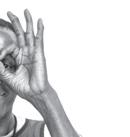

Artist/Vendor


If there is another world, does it have stars and cars?
If there is another world, can I fly there?
Are there people there?
Will they be fair?
How do I get there?
If there is another world, does the sun rust like a shiny diamond? Or will it shine like a broken light?
Are the clouds darker than the night?
Or is everything nice and bright?
If there is another world, do the seas fly? How high?
If there is another world, I want to be there.
Why are there so many angry people We are free to live our lives as we can We can vote, play and Love anybody
Be whoever we want to be We can express our concerns in a Respectful manner
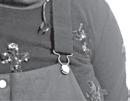
I am so excited that I got a new hair style. It also is me saying I will enjoy the rest of summer but I will miss that season. I will not miss mosquito bites.
I don’t take this prejudice stuff too lightly at all. If you talk about me, you’re talking about your grandmother. More than half of ya’ll came from my color here. That’s a fact, not my opinion.* Why would I hate someone I don’t know, because of a skin tone? Divide and conquer was the plan. United we stand or divided we fall and that’s all I have to say about that, ya’ll.

Peace out.
Editor’s Note: In this piece, Autry is speaking about his African American heritage. According to the 2022 U.S. Census, 40.5% of the population in Washington, D.C. identifies as white while 44.7% identifies as Black or African American.







This poem is inspired by the work of The Notorious BIG.

What’s beef
Beef is:
• When a two-year old and 12-year-old is your target
• When a crowd of youngins jump you at Minnesota Station Metro where you was at
• When officers threaten and physically harm only homeless




• When the government genocided people with fentanyl on purpose
• When you overmedicated my mind for Medicaid purposes
• When you trick bagged my people with stimulus money for votes
It was 8 p.m. at night, Jan. 6. There was so many polices and U.S. Marshalls, Army, National Guard surrounding downtown.

I was really startin’ to get worried about what could happen to me, bein’ Black, bein’ homeless, bein’ out like that and seein’ guys like Proud Boys with scarves over their faces but also lookin’ like military with helmets on they heads, pads on they knees, wearin’ boots.





And also seein’ a lot of other homeless folks bein’ out. We all sittin’ out and talkin’ by Metro Center, 11th St. NW.

We’s all talkin’ about where we can find some place to go to be safe.
So what I did, I stepped up to the pastor, Father Jones, at the Catholic church across from MLK library. He know me, so he say, “Gerald how can I help you?” And I say, “Can you get me off the street?” and he say, “Sure.”
He made a phone call and told me where to go to, to a hotel on 14th St.—two blocks from the White House.
So when I went to go check-in the hotel, it was real funny when the lady told me there was no reservation for me. I feel like she was judging me, the way I was lookin’ with hair on
my face and no suitcase.
But then a guy step out and say, “Yeah, Father John made a reservation.”
One time a security guard stop me and I had to show him the key to my room. It made me feel uncomfortable.
The whole two weeks I was there everyone lookin’ at me like why was I at that hotel.
When you homeless it feel like everyone lookin’ at you like you don’t exist in the community. But if you stop a homeless person, they can help you with directions and other things. We all not bad people.
To me it was a amazing thing for me to be able to get up and shower and clean myself. Eat, watch TV, take a shave. They give you soap, shampoo, deodorant, razor laid out for you. Towels and all that too.
I was feeling more safer. I come out the hotel during the days. At night I could look out the window and see the White House lit up. I could see crowds walkin’ right by the hotel, day and night. You could hear gunshots. I think it was just to keep the rioters away.
I think the police overuse their authority, hittin’ innocent
Where is the change Political folks

Tent city don’t beef We come in peace
This poem is dedicated to the many who died without the dignity of getting a home
folk with rubber bullets. Well, I didn’t know who the people was, getting’ hit with big ol’ rubber bullets.
It was before my spinal cord injury and I was riding around on bicycle—I found a bikeshare bike that was unlocked. I seen all kind o’ groups like BLM, they got into it with a group of Trump supporters. It didn’t last long because the cops came through and broke it up.
The guy from the really nice restaurant Zaytinya was feeding homeless people. It wan’t the first time.
It’s across the street from where I sell my papers. It’s like a celebrity place and it feel good to be eatin’ from it and they would welcome me to walk in and eat there if I want. But I choose to eat outside. Because I wear a lot of undershirts and I don’t want to go in like that. Lamb, white fish, chicken wraps—you gotta get those at lunch time. When you bite it, juice shoot out.
Just about all food places downtown, Pie Pizza, Shake Shack and others, they all help feed me.
About a month later—in February—something happened that changed my life forever.
Across
1. Dean’s e-mail address ender
4. Tease

8. Over-imbibed condition hidden in “You want to serve that guy at the end of the bar - he really overtips you”
13. Campaign worker
15. “Home ____ from home”
16. Chilean range
17. Common Starbucks breakfast (3 wds.) (6,3,6)
20. Pavarotti, notably
21. Fall (over)
22. Old org. for Ukraine (abbr./initialism)
23. Like the White Rabbit
25. Nearly one-third of soccer success?
27. Poetry scheme in which three of four lines rhyme

30. What every U.S. state has been since August 21, 1959 (3 wds.) (3,2,5)
35. When repeated, a Latin dance
36. Ode or haiku
37. “Citizen Kane” actor Everett ___
38. “Wag the Dog” actress Anne who was a 2020 “Dancing with the Stars” contestant
40. U.S. Atty. Gen. Merrick Garland’s agency, in brief (abbr./initialism)
42. Playwright Chekhov
43. Nickname of Beethoven’s Third Symphony
45. “Being good is easy, what is difficult is being ____”: Victor Hugo
47. NFL passing stat (abbr.)
48. Like bears, cats and pelicans, gastronomically (3 wds.) (4,2,4)
50. Olive genus (ALOE anagram)
51. Direction from which el sol rises (Sp.)
52. Word before -skinned or excuse
54. Length x width, for a rectangle
57. Greek liqueur
59. Riding horse, or to climb up on one
63. Proposed purchase terms that are not legally enforceable (2 wds.) (10,5)
66. All atwitter, with “up”
67. Old record label (abbr./initialism) (COAT anagram)
68. “Look out - golf ball comin’ yer way!”
69. Carne ___ (burrito filler)
70. Actor Schreiber who played Ray
Donovan in Showtime’s 2013-2020 series
71. Tofu base
Down
1. Sunrise direction
2. “God does not play ____ with the universe”: Albert Einstein
3. Japanese soup noodle
4. Dorm overseers, for short (abbr./ initialism)
5. Roused from sleep
6. Western writer Grey
7. Louisiana Cajun music style
8. Eastern “way”
9. Process used in administering IV and insulin therapies
10. Many email attachments (abbr./acron.)
11. Envisions
12. W.W. I battle locale
14. ___ Gay (W.W. II plane that dropped the atom bomb on Hiroshima)
18. Pitching stat (abbr./initialism)
19. Music staff symbols
24. “Aww, that’s really ____ bad”
26. D sharp equivalent (2 wds.) (1,4) (FETAL anagram)
27. Professional most likely to wear a toque (2 wds.) (1,4) (CHAFE anagram)
28. Brave choice at the sandwich shop? (2 wds.) (1,4)
29. The B in BLT
31. Texter’s type face?


32. Deadly
33. U.S. gov’t.-backed security, briefly (1-4)
34. “Fiddler on the Roof” busybody role (from the Yiddish)
36. River to the Rio Grande (SCOPE anagram)
39. Sofa engineered for extended catnaps
41. On only a single occasion (2 wds.) (4,4)
44. “Flow gently, sweet ___” (much-loved Burns poem about a Scottish river)
46. “Pipe down!”
49. Name for the Middle Ages system of serfs and vassals
50. Wall switch words...or power setting positions found “hidden” in 17-, 30-, 48- and 63-Across (2 wds.) (2,3)
53. “If you ask me,” to texters (abbr./initialism)
54. ‘Lonely Boy” singer/songwriter Paul
55. Some deer (ROSE anagram/homophone)
56. One-named Irish New Age singer
58. Penne alternative
60. Flying saucers and such initially?
61. Who supposedly fiddled while Rome burned
62. Low card that sounds like a lunch carrier
64. Boise’s state (abbr.)
65. End of a White House address (abbr.)
*This crossword puzzle is the original work of Patrick “Mac”McIntyre. It is provided to us courtesy of Real Change News, a street paper based in Seattle, Wa. Learn more about Real Change News and the International Network of Street Papers at realchangenews.org and insp.ngo.
Opposites in Hiding
Academy of Hope Public Charter School 202-269-6623 // 2315 18th Place NE aohdc.org
Bread for the City - 1525 7th St., NW // 202-265-2400 - 1640 Good Hope Rd., SE // 202-561-8587 breadforthecity.org
Calvary Women’s Services // 202-678-2341 1217 Good Hope Rd., SE calvaryservices.org
Catholic Charities // 202-772-4300 catholiccharitiesdc.org/gethelp
Central Union Mission // 202-745-7118 65 Massachusetts Ave., NW missiondc.org
Charlie’s Place // 202-232-3066 1830 Connecticut Ave., NW charliesplacedc.org
Christ House // 202-328-1100 1717 Columbia Rd., NW christhouse.org
Church of the Pilgrims // 202-387-6612 2201 P St., NW food (1-1:30 on Sundays only) churchofthepilgrims.org/outreach
Community Family Life Services 202-347-0511 // 305 E St., NW cflsdc.org
Community of Hope // 202-232-7356 communityofhopedc.org
Covenant House Washington 202-610-9600 // 2001 Mississippi Ave., SE covenanthousedc.org
D.C. Coalition for the Homeless 202-347-8870 // 1234 Massachusetts Ave., NW dccfh.org
Father McKenna Center // 202-842-1112 19 Eye St., NW fathermckennacenter.org
Food and Friends // 202-269-2277 (home delivery for those suffering from HIV, cancer, etc) 219 Riggs Rd., NE foodandfriends.org
Foundry Methodist Church // 202-332-4010 1500 16th St., NW ID (Friday 9am–12pm only) foundryumc.org/ministry-opportunities
Friendship Place // 202-364-1419 4713 Wisconsin Ave., NW friendshipplace.org
Georgetown Ministry Center // 202-338-8301 1041 Wisconsin Ave., NW georgetownministrycenter.org
Jobs Have Priority // 202-544-9128 425 2nd St., NW jobshavepriority.org
Loaves & Fishes // 202-232-0900 1525 Newton St., NW loavesandfishesdc.org
Martha’s Table // 202-328-6608 marthastable.org
2375 Elvans Road SE
2204 Martin Luther King Ave. SE
Miriam’s Kitchen // 202-452-8926 2401 Virginia Ave., NW miriamskitchen.org
My Sister’s Place // 202-529-5991 (24-hr hotline) mysistersplacedc.org
N Street Village // 202-939-2060 1333 N St., NW nstreetvillage.org
New York Avenue Shelter // 202-832-2359 1355-57 New York Ave., NE
Patricia Handy Place for Women 202-733-5378 // 810 5th St., NW
Samaritan Inns // 202-667-8831 2523 14th St., NW samaritaninns.org
Samaritan Ministry 202-722-2280 // 1516 Hamilton St., NW 202-889-7702 // 1345 U St., SE samaritanministry.org
Sasha Bruce Youthwork // 202-675-9340 741 8th St., SE sashabruce.org
So Others Might Eat (SOME) // 202-797-8806 71 O St., NW some.org
St. Luke’s Mission Center // 202-333-4949 3655 Calvert St., NW stlukesmissioncenter.org
Thrive DC // 202-737-9311 1525 Newton St., NW thrivedc.org
Unity Health Care 3020 14th St., NW // unityhealthcare.org
- Healthcare for the Homeless Health Center: 202-508-0500
- Community Health Centers: 202-469-4699
1500 Galen Street SE, 1500 Galen Street SE, 1251-B Saratoga Ave NE, 1660 Columbia Road NW, 4414 Benning Road NE, 3924 Minnesota Avenue NE, 765 Kenilworth Terrace NE, 555 L Street SE, 3240 Stanton Road SE, 3020 14th Street NW, 2700 Martin Luther King Jr. Avenue SE, 1717 Columbia Road NW, 1313 New York Avenue, NW BSMT Suite, 425 2nd Street NW, 4713 Wisconsin Avenue NW, 2100 New York Avenue NE, 2100 New York Avenue NE, 1333 N Street NW, 1355 New York Avenue NE, 828 Evarts Place, NE, 810 5th Street NW
Washington Legal Clinic for the Homeless 1200 U St., NW // 202-328-5500 legalclinic.org
The Welcome Table // 202-347-2635 1317 G St., NW. epiphanydc.org/thewelcometable
Whitman-Walker Health 1701 14th St., NW // 202-745-7000 2301 MLK Jr. Ave., SE // 202-797-3567 whitman-walker.org
Retail Sales Associate
Macy’s // 1201 G St. NW
Full-time
Provide customer service, meet sales goals and create shopping experiences. Maintain the store and stockroom.
REQUIRED: Able to lift up to 25 pounds.
APPLY: tinyurl.com/macys-member
Restaurant Team Member
Shake Shack // 54 M St. SE
Full-time
Serve guests, prepare food and clean the restaurant.
REQUIRED: N/A
APPLY: tinyurl.com/shake-shack-teammember
Utility Worker/Dishwasher
The Residences at Thomas Circle // 1330 Massachusetts Ave. NW
Part-time, full-time
Maintain a clean and safe kitchen. Wash dishes, run dishwashers and stock deliveries.
REQUIRED: N/A
APPLY: tinyurl.com/residences-thomascircle
For further information and listings, visit our online service guide at StreetSenseMedia.org/service-guide





























































